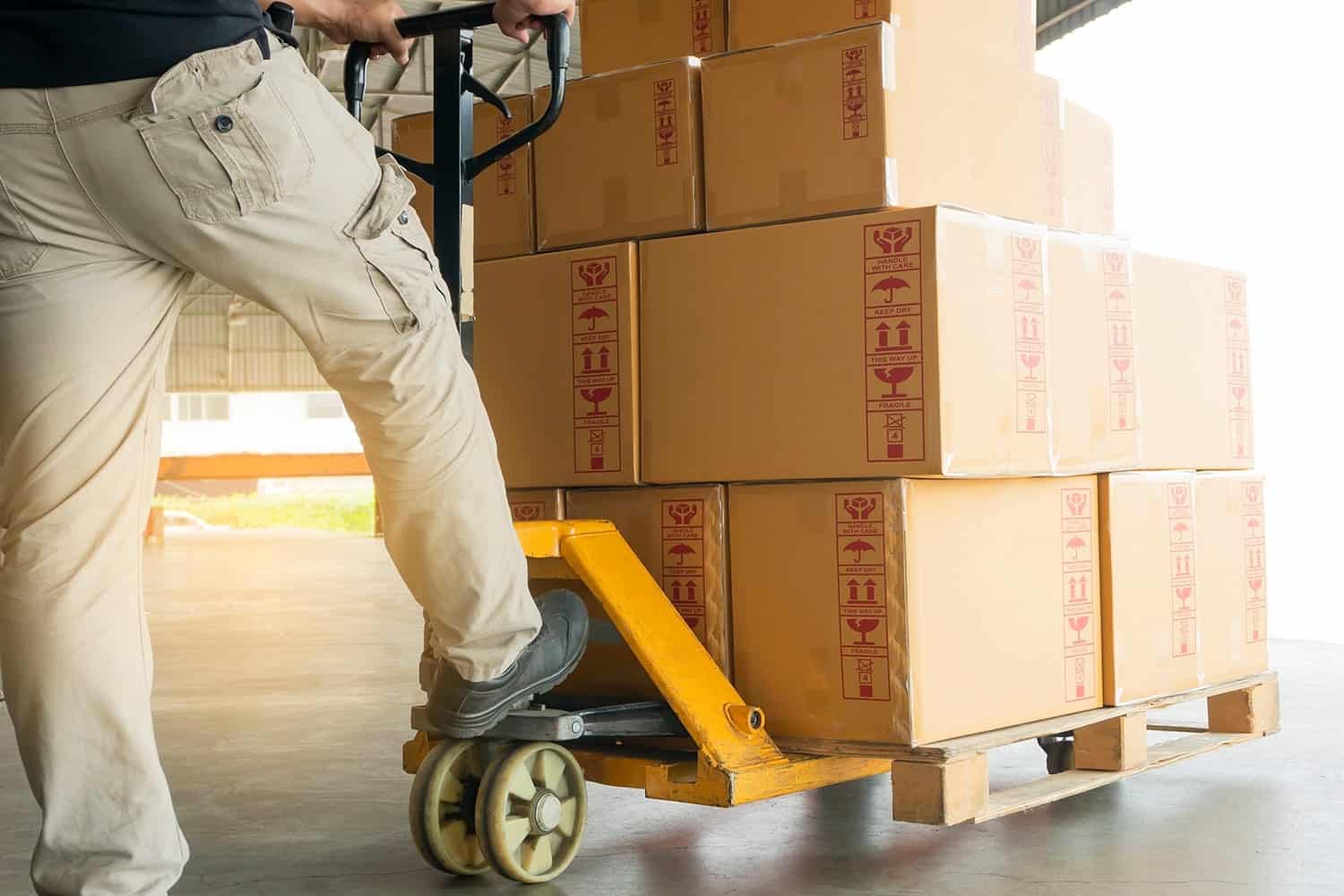
While high-quality pallet jacks are designed to withstand frequent use, it remains ideal to regularly conduct inspections and maintenance work to prolong their life and prevent workplace accidents.
The list below explains the basic inspection and maintenance for this popular warehouse tool.
Routinely inspect the steer wheels.
The wheels should have no chips, flat spots, and other irregularities that prevent them from rolling smoothly. Meanwhile, these are the telltale signs that will tell you that they are ready to retire:
- Their diameter has shrunk to more than ¼ of their original size.
- The wheels don’t roll or turn smoothly.
Use the tool correctly.
When you move the pallet jack, make sure that you set the operating lever in the drive position, allowing the drawbar to maneuver easily. This ensures that the valve components and the hydraulic seals are not exposed to unnecessary wear and tear.
Also, avoid using your pallet jacks on slopes because of the risk of accident and injury.
Don’t overload your pallet jacks.
When you overload pallet jacks, the wheel may form a flat spot. In addition, using them on irregular surfaces (or steps) can result in cracking and other signs of wear and tear.
To further prolong the wheels’ lifespan, clean them regularly and remove wires and debris that got stuck around them.
Oil your pallet jack regularly.
A good rule of thumb is to check your pallet jack’s oil level at least every six months and replace it ideally every year. (Note: The oil should have the right level of viscosity–ideally not more than 30cSt at room temperature–so the transporting tool is not too difficult to pump.)
If you see that the oil reservoir is running low, make sure that you refill it while the pallet jack is in the lowered position and on its side.
Lubricate its “critical” points every month.
Make sure that you lubricate the wheels, fittings, and axles at least every month to prevent or at least reduce wear and tear.
Adjust the valve when the tool does not raise or lower the forks.
This problem often stems from the lowering valve. To correct this, adjust the lowering pump, so you can lower the fork or pump it again.
If pumping does not raise the forks, try loosening the lowering valve crew. And if the forks don’t come down, try tightening the lower valve screw.
Inspect the chain.
You can check if the chain is in the correct position when operating the lowering valve. To solve this problem, you can reattach the chain to the lever.
Store it correctly.
Make sure that you store your packet jack without any load and in the lowest position.
Remove the trapped air inside the hydraulic pump.
If your pallet jack won’t lift the load, the usual culprit is the trapped air inside the hydraulic pump. To correct this problem, pump the lever rapidly, about 12-15 times, or until it releases the air bubble inside the mechanism.
Final Words on Pallet Jack Maintenance Guide
Pallet jacks can last for many years if they are made by reputable manufacturers and are properly maintained, i.e., they are lubricated regularly, and the wheels, grease fittings, and forks are routinely inspected.
If you need replacement parts for your pallet jacks, contact Wholesale Industrial Parts at (844) 588-8455. They are a Sacramento-based company that stocks a wide range of tires and warehouse tools replacements that they ship anywhere.
The company also offers mobile tire press services to their local customers.

